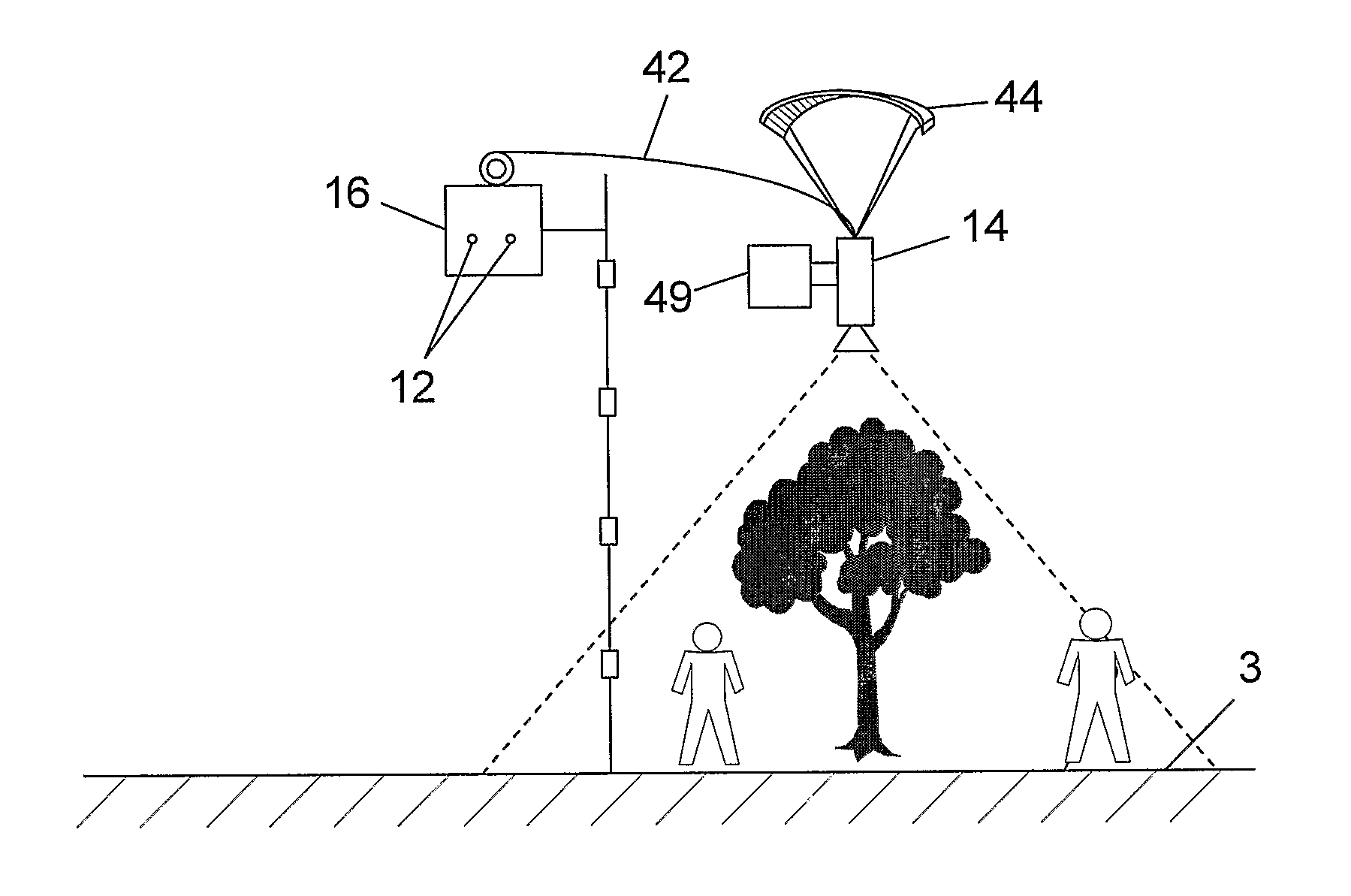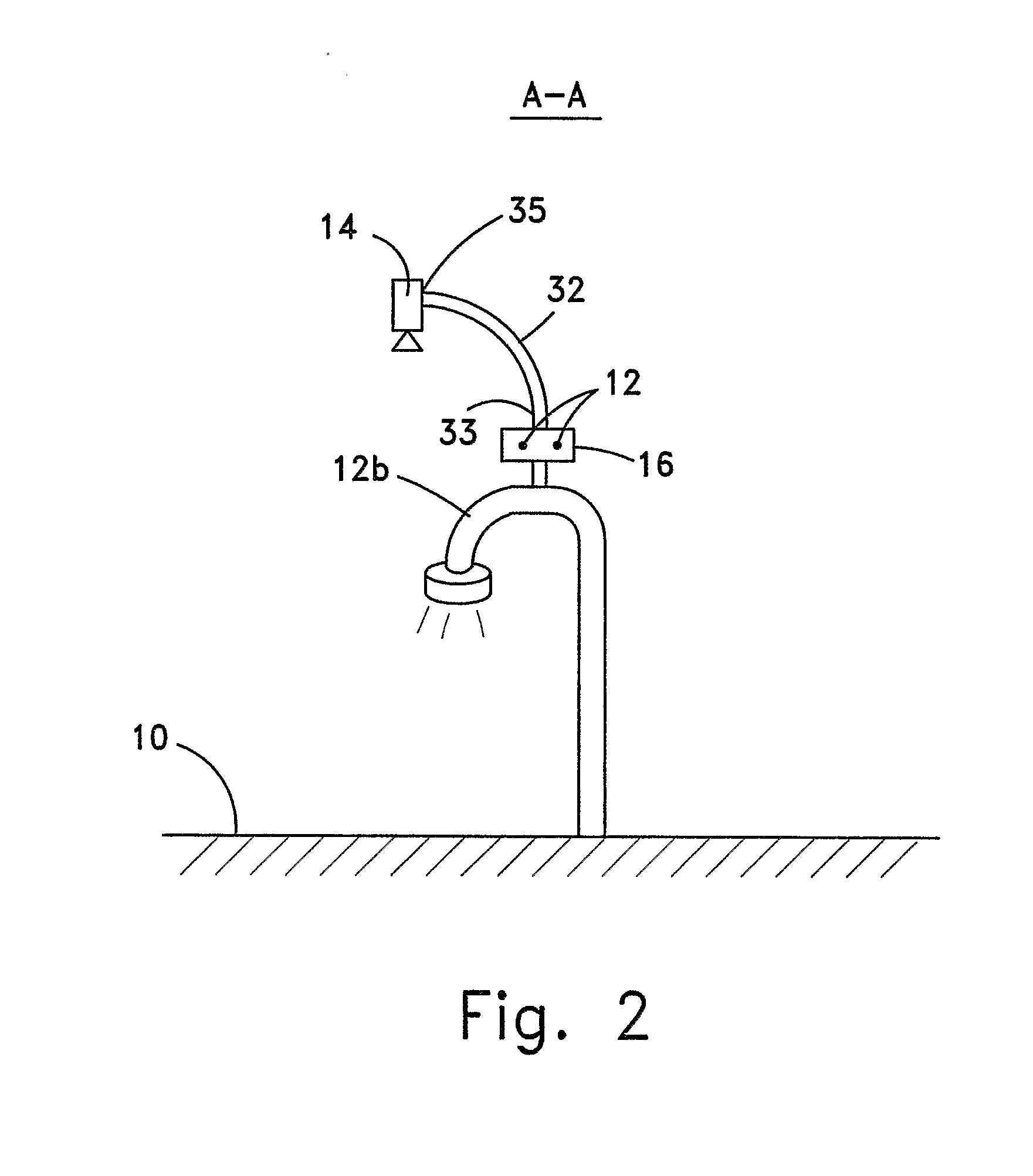Surveillance System and Method for Detecting Forbidden Movement along a Predetermined Path
a surveillance system and path technology, applied in the field of surveillance systems, can solve problems such as pursuing violators, monetary damages and/or physical injuries, and crashes that, in many cases, are fatal,
- Summary
- Abstract
- Description
- Claims
- Application Information
AI Technical Summary
Benefits of technology
Problems solved by technology
Method used
Image
Examples
first embodiment
[0147]A first example of an application of the present invention is shown in FIGS. 1 through 8d. FIG. 1 shows a schematic perspective view of a two-lane highway (10) having light posts (12a), (12b), (12c) spaced apart along the length of one side of highway (10). According to a preferred embodiment of the present invention, mobile platform (16) travels along cable line (12) along the length of the highway (10), and has camera (14) connected thereto via a mechanical connection. In the first example, the mechanical connection takes the form of a rigid shaft (22). Rigid shaft (22) comprises an elongated rod made of a single member, which is joined, at one end (24), to camera (14), and, at the other end (25), to mobile platform (16). Rigid shaft (22) may be straight or curved, and is positioned such that one end (24) is elevated, preferably above highway (10). Ends (24),(25) may be fixedly joined to camera (14) and mobile platform (16) respectively, or ends (24),(25) may be rotatably jo...
third embodiment
[0153]the first example of the present invention is shown schematically in FIG. 3, and comprises all the elements of the first embodiment as described above, mutatis mutandis, with the following differences. In this embodiment, the mechanical connection of the surveillance system is provided in the form of a woundable flexible cable (42). Additionally, camera (14) is mounted on a secondary platform that creates or is acted upon by aerodynamic lift forces, such as a helium balloon (45), a kite (not shown), a parachute (not shown), or a glider (not shown). The secondary platform is connected to mobile platform (16) via cable (42).
[0154]The position of camera (14) in FIG. 3 is controlled by the combination of the buoyant force (shown by arrow (46)) of helium balloon (45), which creates lift that forces balloon (45) upward, and motor (49), which is connected to a propulsion mechanism that causes balloon (45) to move in a horizontal direction (shown by arrow (48)), or hover with respect ...
fourth embodiment
[0158]the first example of the present invention is shown schematically in FIG. 4, and comprises all the elements of the first embodiment as described above, mutatis mutandis, with the following differences. In this embodiment, the mechanical connection of the surveillance system comprises a rigid shaft (52) having two members (52a), (52b), each pivotally joined, at one end, to each other, and at their other end, to camera (14) and to mobile platform (16), respectively. Alternatively, more than two shaft members may be present. The shaft members (52a), (52b) pivotably rotate about respective axes, as indicated by arrows (51). At least one motor (not shown) controls the movement of each shaft member (52a), (52b) and the camera (14) relative to each other.
PUM
 Login to View More
Login to View More Abstract
Description
Claims
Application Information
 Login to View More
Login to View More - R&D
- Intellectual Property
- Life Sciences
- Materials
- Tech Scout
- Unparalleled Data Quality
- Higher Quality Content
- 60% Fewer Hallucinations
Browse by: Latest US Patents, China's latest patents, Technical Efficacy Thesaurus, Application Domain, Technology Topic, Popular Technical Reports.
© 2025 PatSnap. All rights reserved.Legal|Privacy policy|Modern Slavery Act Transparency Statement|Sitemap|About US| Contact US: help@patsnap.com



